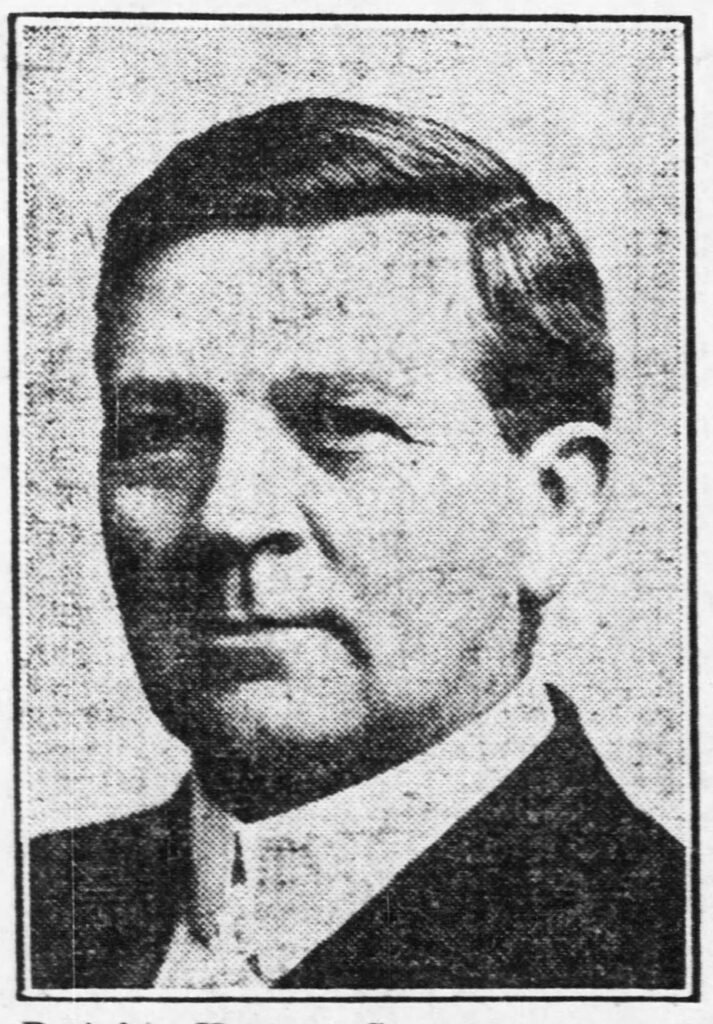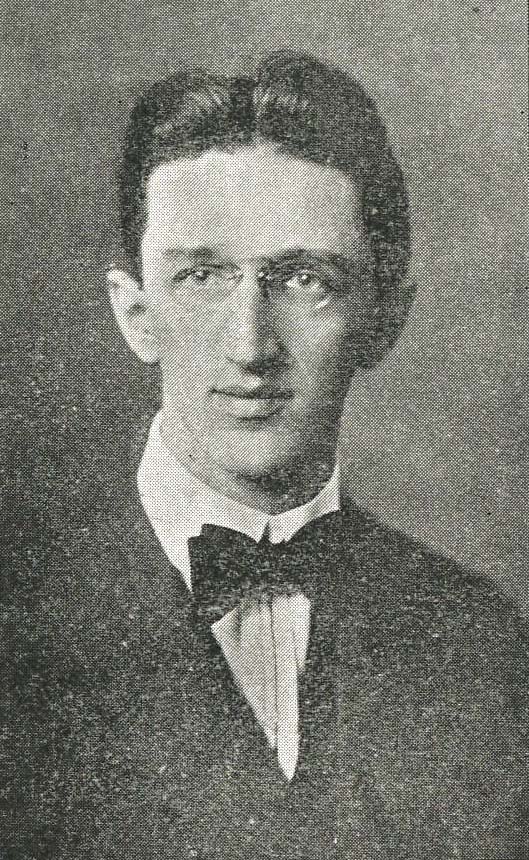The oldest church organ in Kansas is located at the Methodist Church in Cawker City. But it might surprise you to know that this beautiful organ’s majestic chords first filled the sanctuary of the Kinsley Congregational Church.
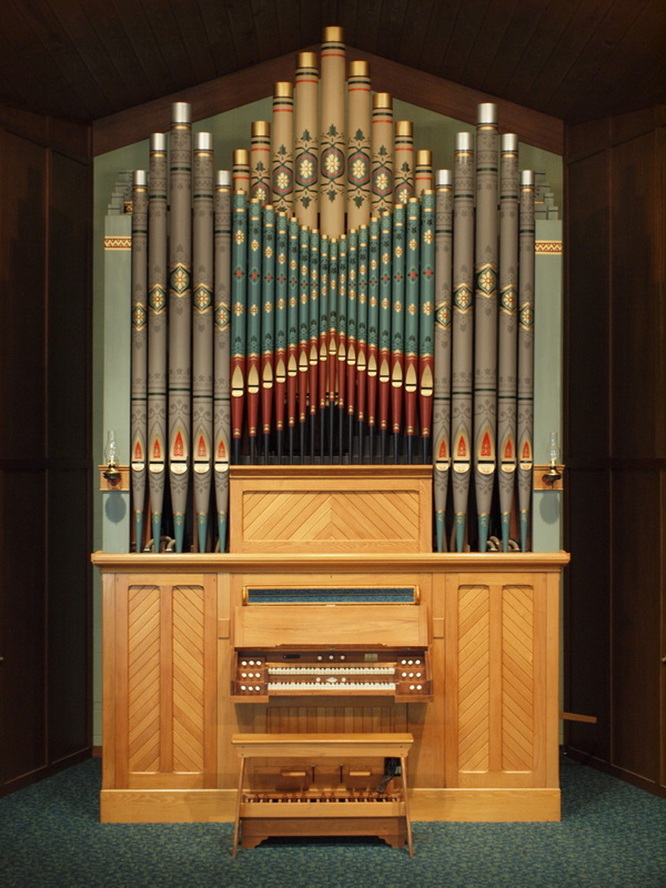
In 1885, when the Congregational Church members decided to build a new church on the corner of Niles Avenue and Seventh St, some wanted to purchase a pipe organ. Others thought that was only a “pipe” dream. Kinsley was a frontier town; there were no organs west of Emporia.
But acting with the faith of pioneers, the congregation went ahead and ordered an organ from Henry Pilcher’s Sons of Louisville, Kentucky. Its $1800 cost would be paid through donations, local fund-raising and the promise of proceeds from future concerts.
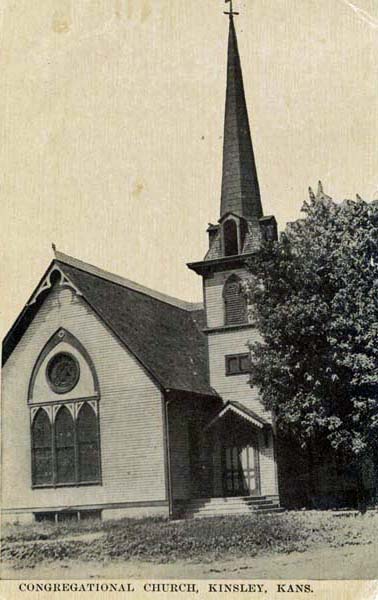
The new church building was dedicated in October, 1886, and the new organ arrived in November. It was big, occupying a space on the floor of 10 ½ feet wide by 7 feet deep and standing nearly 20 feet high. It was handsomely decorated in bright colors with gold and silver leaf and had 628 pipes and 12 stops.
What really intrigued the people while watching it be assembled was seeing how it worked. This description in the December 11, 1886 issue of the Kinsley Mercury helped me to understand.
“The mechanism of the instrument is a marvel of ingenuity and somewhat difficult to describe. The wind is supplied by a bellows measuring seven feet long and five feet wide with double feeders worked by a lever at the back. The wind is then conveyed to the four wind chests which contain the valves, of which there is one for each key and pedal. As the keys are pressed down thus opening the valves, the compressed air is admitted to as many pipes as there are stops drawn.
“There are two sets of keys and twenty-seven pedals, besides the composition movements for rapid changes of stops, and a balanced swell pedal, all brought under the control of one performer.”
Professor Willis J. Peck was hired as the first organist, and he carried out a dedication recital on December 15, 1886 which was “artistically and financially a complete success”. Tickets amounting to $450 were sold to pay toward the outstanding balance on the organ.
“Mr. Peck seemed in his element as he took his seat at the organ, giving as the opening number the popular wedding march from Mendessohn’s ‘Midsummer Night’s Dream,’ and in which he brought forth the power and beauties of the organ with fine effect.” Mr. Henry Pilcher, owner of the organ company, had come to Kinsley and played two numbers. Many talented local vocalists and musicians also performed.
During the following years, the organ provided music for church services, weddings, funerals, and concerts, some of the latter being performed by well-known organists including Dwight H. Seymour of Colorado Springs. He came in 1907 to repair the organ and to give a concert.
That’s when Seymour (age 47) met Morton Schnatterly (age 43). She ran the local millinery shop in Kinsley with her sister, Myrton. Between his performances in Kansas, trips Miss Schnatterly’s took to Colorado Springs and correspondence, they must have fallen in love. They married on September 11, 1909, and he became the Congregational Church organist. For the next few years, Seymour was instrumental in fostering music with the youth and adding to the culture of the city.
Pipe organs can be expensive to keep in repair. When Mr. Day of Kansas City was hired to rebuild it, he reported that “…the material in this instrument is all of the best quality, and that when the rebuilding is completed it will be as good as new and will last another twenty years.” (Graphic, May 27, 1909)
To help fund the repairs, well-known organists were again brought in for concerts including Prof. Charles S. Darling of the 2nd Presbyterian Church of Kansas City and Roland Diggle of the Episcopal Cathedral at Wichita.
One critic reported that Mr. Diggle “is indeed an artist, excellent in technique, exquisite in taste, serious in purpose. But his playing… lacks spirit, enthusiasm, inspiration …. the writer ventures to believe the musician has not yet had his heart broken. He will play better after that experience.” (Mercury, June 2, 1909)
In August, 1911, the congregation debated replacing the organ as the costs of repairs were more than it was worth. A fund was set up, but whether the money could not be raised or for whatever other reason, a new organ was not purchased.
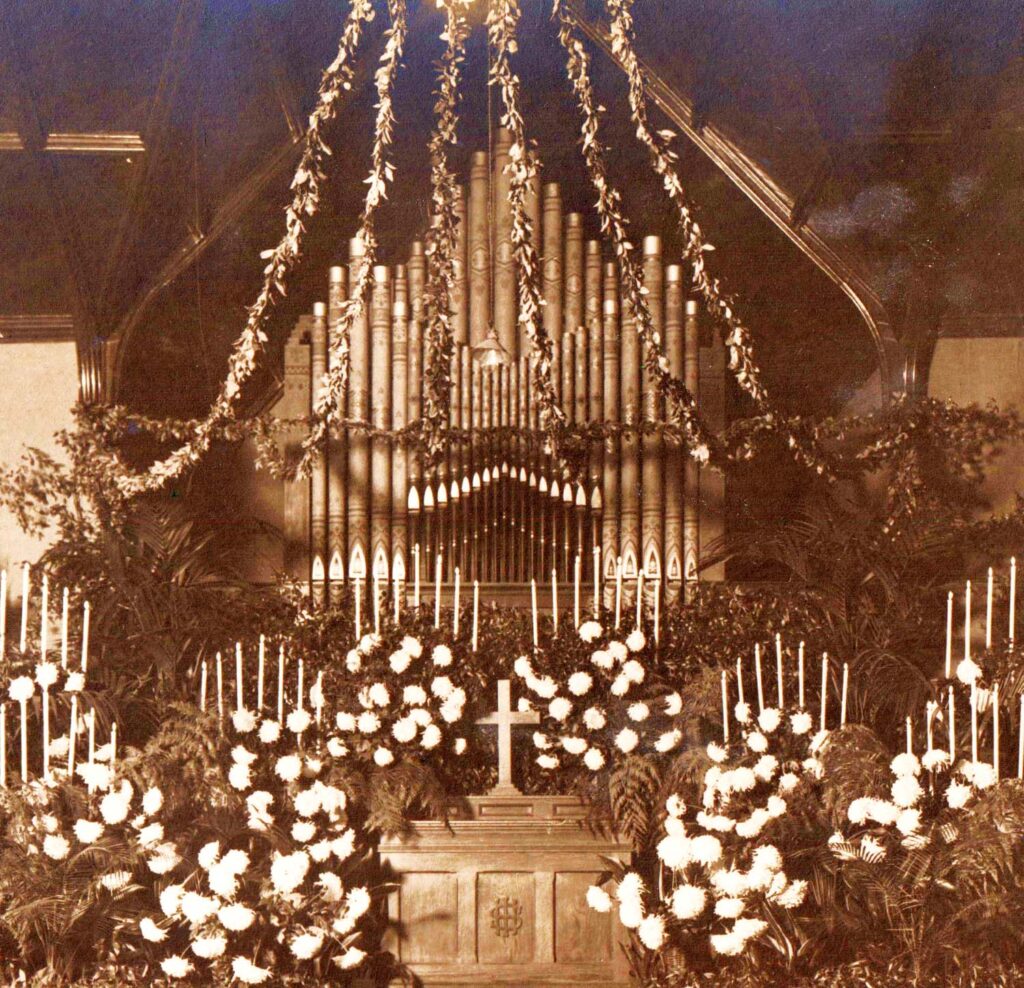
The Pilcher organ continued to serve the church and community until 1931 when Mr. and Mrs. W. D. West gave a substantial gift in memory of their son toward the purchase of a larger, more “modern” organ from the Reuter Organ Co. of Lawrence, Kansas. This Reuter organ is still used in the current Congregational Church building.
In 1931, the husband of the Cawker City Methodist Church’s custodian, Clarence Wolbert and Elda Coe drove a pickup truck to Kinsley to haul the dismantled Pilcher organ away. Their current organist, Steve Richardson, has done considerable research and created a wonderful website which continues the fascinating history of the Pilcher organ as it continues to fill a sanctuary with lofty praise on Sunday mornings. https://1886pilcher.weebly.com/1886

